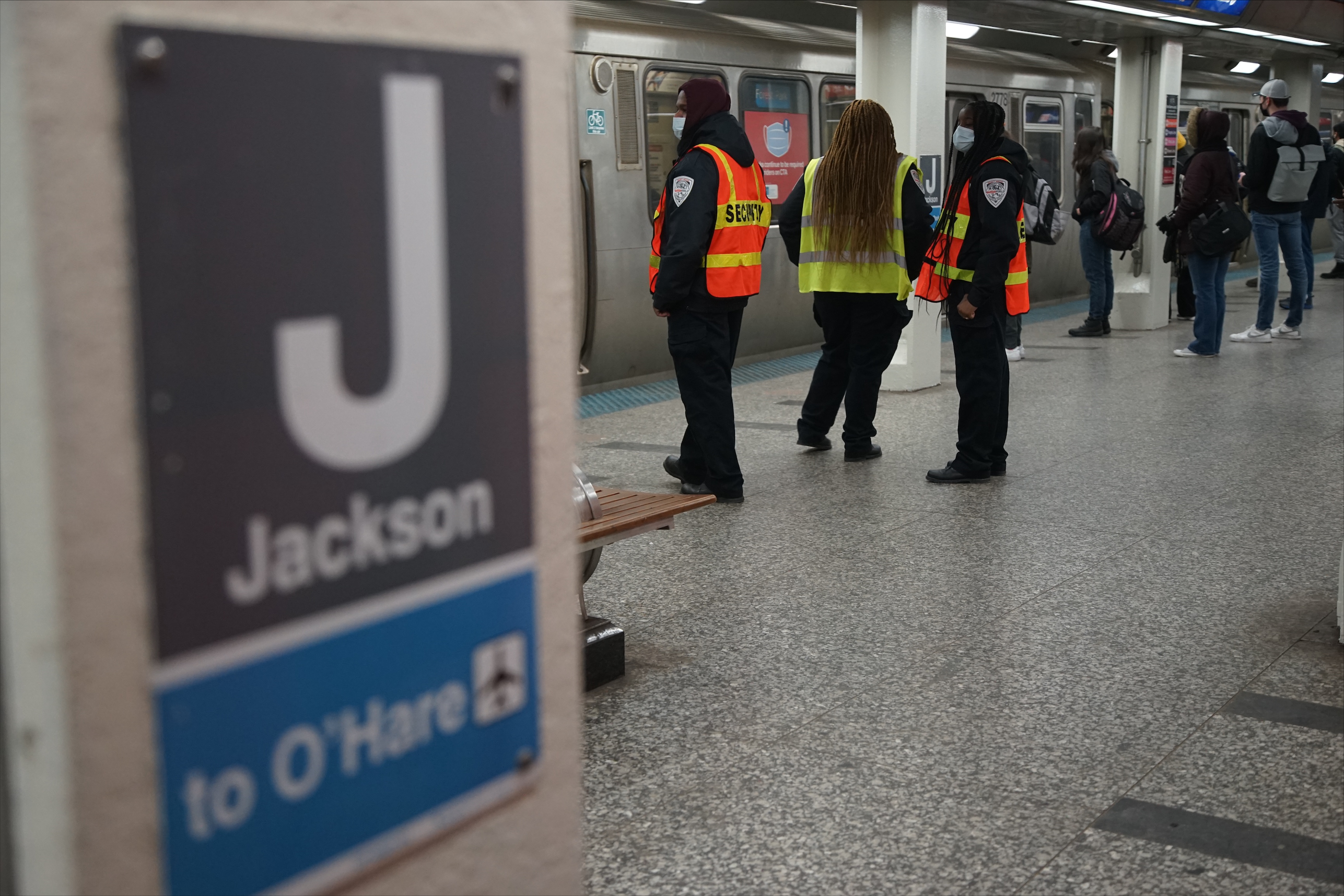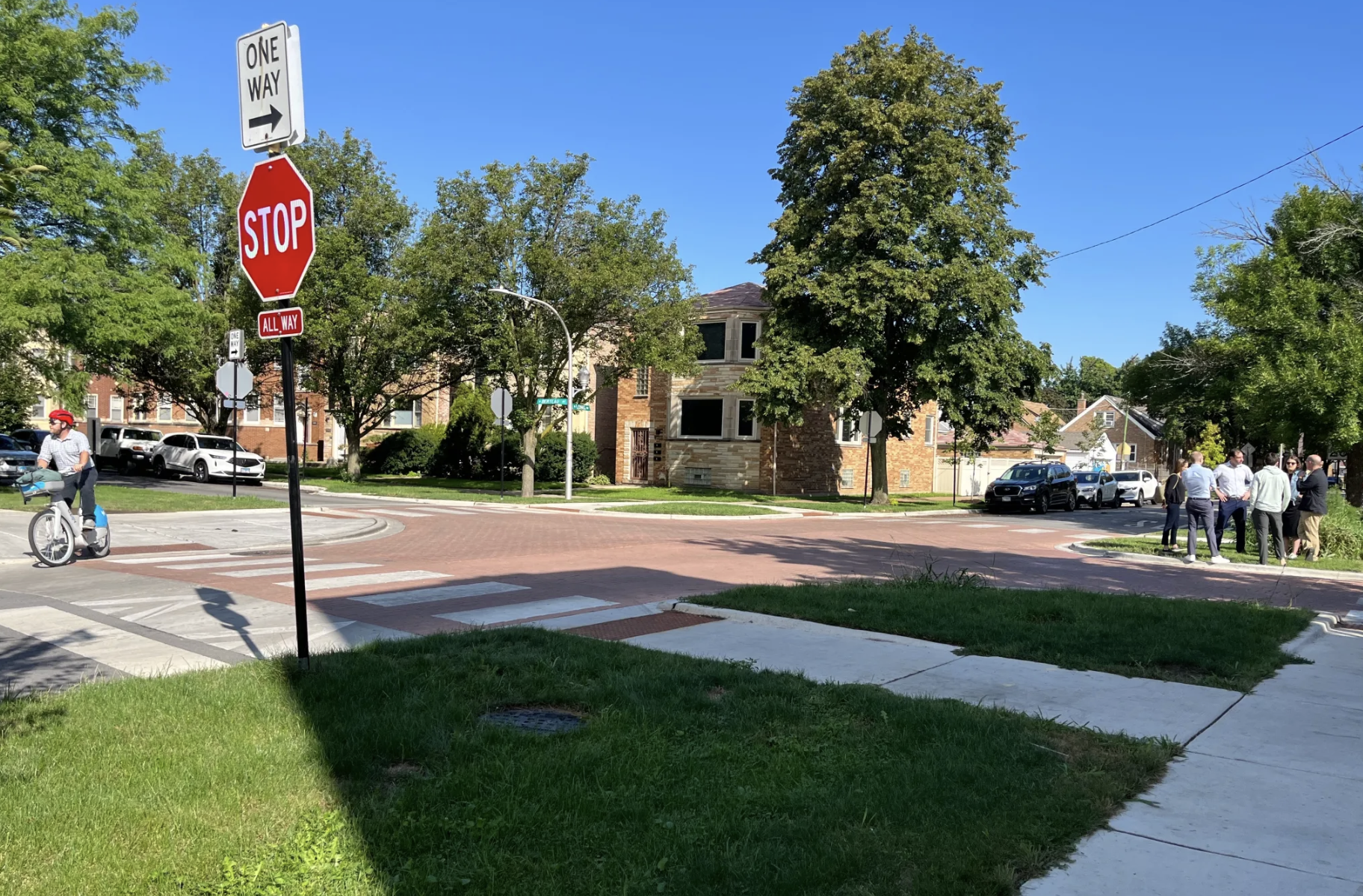Last Wednesday Mayor Lori Lightfoot, along with the heads of the Chicago Police Department and the CTA, announced at a press conference that police resources would be shifted from the Bureau of Counterterrorism to the 'L' system in order to address the spike in violent crime on transit during the COVID-19 pandemic, a time when many Chicagoans have been experiencing economic and mental health crises. The deployed officers (asked how many, police chief David Brown simply said replied, "As much as we need to send to the CTA to make it safe,”) will focus on the 24-hour Red and Blue lines, using data to target high-crime stops with an emphasis on preventing gang- and drug-related violence.
The CTA is also greatly increasing the number of unarmed, uniformed security guards on trains and buses with Wednesday's CTA board approval of $71 million in multi-year contracts with Inter-Con Security and Monterrey Security. The guards will be deployed seven days per week – up from five – and their numbers will double to more than 200, according to CTA spokesperson Brian Steele.
The guards are intended to act as a deterrent to crime and problematic rule-breaking, such as harassment, public urination, smoking, and littering. They will offer to connect unhoused people sheltering on trains with city services, and assist customers with navigating the system. They will be trained in conflict resolution and de-escalation, and briefed about CTA operations so they can answer questions about bus and rail service.
When asked how the guards would handle violations of the CTA Code of Conduct such as people sleeping while laying across four or five seats in rail cars, Steele said the guards would notify the CTA control center and then “engage social services and/or the police department as needed.” Streetsblog noted last week that it will be important to monitor whether the increase in security personnel leads to more unhoused people, including those who aren’t causing serious problems for other riders, being ejected from the system without being offered a better alternative for shelter.
Julie Dworkin, director of policy for the Chicago Coalition for the Homeless, believes there have been more people using the CTA as a place to stay warm and sleep during COVID-19. (Disclosure: Dworkin is an old friend of Streetsblog Chicago co-editor John Greenfield.) “I do think there’s an increase in people sleeping on the trains,” she said. “It’s something that has been an issue for a long time. I think it’s gotten worse because the shelters have reduced capacity because of social distancing.”
Dworkin added that the shelters are full and the wait time to get placed in a shelter is currently 15 hours on average, and the city’s warming centers close at 5 p.m. “These security guards might be trained on how to help people, but I'm really not sure there’s any help that they can offer if there’s no availability of shelter. So I would absolutely be concerned about them pushing people off the trains.”
At this week’s presser, Steele noted that the CTA has a partnership with nonprofit social services provider The Night Ministry to regularly do outreach to people experiencing homelessness, which can include offering to connect them with shelters and offering masks, clothes, food, and personal hygiene items.
“Private nonprofits like the Night Ministry are doing good work,” Dworkin said. “But they’re really only able to offer people shelter or connect them with COVID testing or vaccines or food – immediate emergency needs. So I would be concerned if the guards will be there to push people off or criminalize people in any way. We will be monitoring the situation and hopefully there's not going to be any issues with it.”
Asked to explain how she defines "criminalizing" unhoused people on the CTA, Dworkin responded, "What I meant by criminalize was not about people breaking existing rules or laws, but rather about turning a behavior that they are doing simply by virtue of the fact that they are homeless, like sleeping, into a reason to ask them to leave or involve police."

Sleeping across several seats does break existing rules in the Code of Conduct against "occupying more than one seat by placing objects, shoes or feet on adjoining seats" and "sleeping or dozing where such activity may interfere with CTA services." Dworkin indicated that she doesn't have a problem with enforcing rules against truly problematic behavior like harassment or smoking, but suggested that unhoused people sleeping across multiple seats is an example of relatively victimless rule-breaking that shouldn't be enforced.
"There are other rules or laws that the city has like camping in a park, that they often do not enforce because they recognize that people have nowhere to go," Dworkin said. "If the city were to start enforcing those laws or pass new ones along those lines, we would be asking the city to examine the fairness of those laws. People in the general public do not like seeing homeless people on the trains or sleeping outside, and often ask public officials to do something about it. But responding to their discomfort by moving people around or ticketing them is not a solution to homelessness and just creates more problems for people trying to escape homelessness."
At the press conference Streetsblog asked Lightfoot if, in addition to the $71 million in security contracts, the city had considered increasing funding for mental health services and housing for people experiencing as mental illness and/or homelessness, as a strategy to reduce the number of people forced to shelter on the CTA. The mayor pointed to $1.2 million in additional funding to address mental illness and trauma, and said the city is "providing resources specifically for homeless prevention, as well as making sure that we’re expanding our offerings of affordable and transitional housing.”
However, Dworkin doesn’t think the city of Chicago is doing enough to house people. “This is typical of the way that the city is always addressing homelessness,” she said. “They’re just responding to these different crises like there are people sleeping outside and it’s 20 below. They need a proactive, long-term strategy to address homelessness, and we've been fighting for that for four years through our Bring Chicago Home campaign.” She said this initiative would impose a one-time tax on homes worth more than $1 million, which would affect less than 5.2 percent of annual homes sales. “The dedicated revenue that's locally generated through an increase in the real estate transfer tax could house 12,000 people over 10 years. So that's what we think is the solution, and I don't think there's really going to be a decrease in people sleeping on the trains until we have a more systemic solution in place.”





